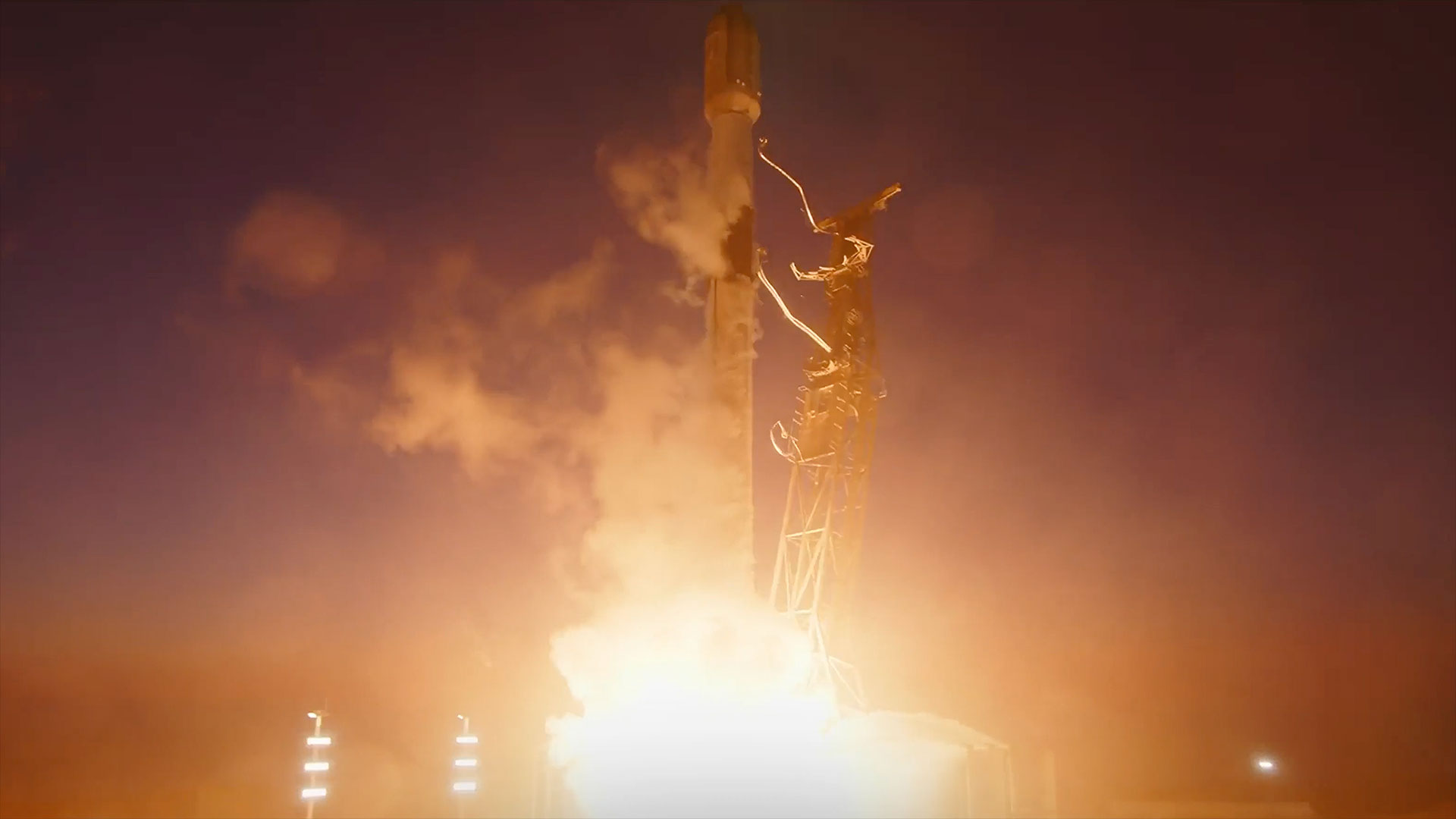What Happened
On June 16, 2025, SpaceX successfully launched 26 Starlink V2 Mini satellites into low Earth orbit from the Vandenberg Space Force Base in California. The launch occurred at 8:36 p.m. PDT (11:36 p.m. EDT), utilizing a Falcon 9 rocket, which marked the vehicle’s third flight. This mission, designated Starlink 15-9, was notable for being the 200th orbital launch from the Space Launch Complex 4 East at Vandenberg. The Falcon 9 rocket’s first stage successfully landed on the droneship “Of Course I Still Love You” in the Pacific Ocean approximately eight minutes after liftoff.
This launch follows a series of SpaceX missions in June, including earlier deployments of Starlink satellites. The company has been actively expanding its Starlink broadband internet network, which now comprises over 7,760 active satellites. The recent launches are part of SpaceX’s ongoing efforts to enhance global internet coverage, particularly in remote areas.
Key Details
- Launch Date and Time: June 16, 2025, at 8:36 p.m. PDT (11:36 p.m. EDT).
- Rocket Used: Falcon 9, a two-stage rocket measuring 230 feet.
- Launch Location: Space Launch Complex 4E at Vandenberg Space Force Base, California.
- Mission: Deployment of 26 Starlink V2 Mini satellites into low Earth orbit.
- Booster Landing: The Falcon 9 first stage landed on the droneship “Of Course I Still Love You,” marking the 463rd successful booster landing for SpaceX.
- Upcoming Launches: SpaceX has additional missions planned for June, including a rideshare flight and a government satellite deployment, although specific dates for these launches remain tentative.
Multiple Perspectives
The recent launch has been met with enthusiasm from various stakeholders. Supporters of SpaceX and the Starlink program argue that the expansion of satellite internet services is crucial for bridging the digital divide, particularly in underserved regions. They highlight the importance of reliable internet access for education, business, and emergency services.
Conversely, some critics express concerns about the environmental impact of launching large numbers of satellites and the potential for increased space debris. They argue that the rapid deployment of satellites could lead to overcrowding in low Earth orbit, posing risks to both operational satellites and future space missions. Additionally, there are ongoing discussions about the implications of satellite internet services on traditional telecommunications providers.
Context & Background
SpaceX, founded by Elon Musk, has been a pioneer in the commercial space industry, particularly with its reusable rocket technology. The company’s Starlink project aims to create a global broadband network through a constellation of satellites in low Earth orbit. This initiative is part of a broader trend in the aerospace sector, where private companies are increasingly taking on roles traditionally held by government space agencies.
The Vandenberg Space Force Base has become a key launch site for SpaceX, particularly for missions that require polar or sun-synchronous orbits. The base’s strategic location allows for launches that minimize risks to populated areas during liftoff.
The success of the June 16 launch adds to a series of missions that have demonstrated SpaceX’s capabilities in satellite deployment. As the company continues to expand its Starlink network, it is also exploring additional launch sites and missions, including potential collaborations with government agencies and international partners.
What We Don’t Know Yet
While the June 16 launch was successful, several uncertainties remain. The specific dates for upcoming missions, including the rideshare and government satellite deployments, have not been officially confirmed. Additionally, while SpaceX has plans for future launches, the potential for delays due to weather conditions or technical issues is always a consideration in the aerospace industry.
Furthermore, the long-term implications of the expanding Starlink network on global internet access, competition with traditional providers, and the management of space debris are ongoing discussions that require further exploration. As SpaceX continues to innovate and expand its operations, these questions will likely remain at the forefront of industry conversations.





